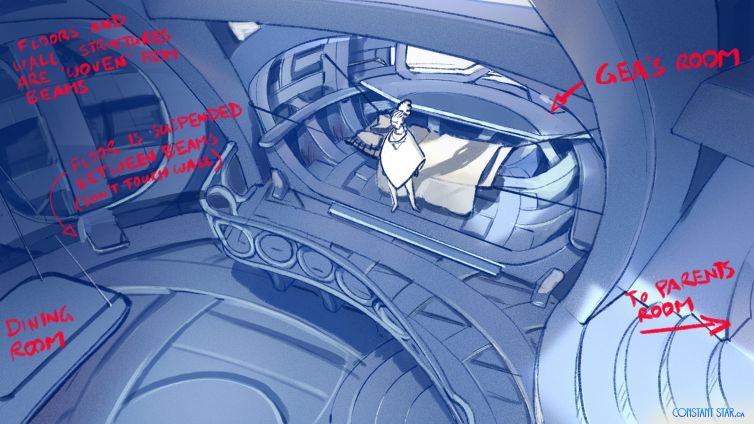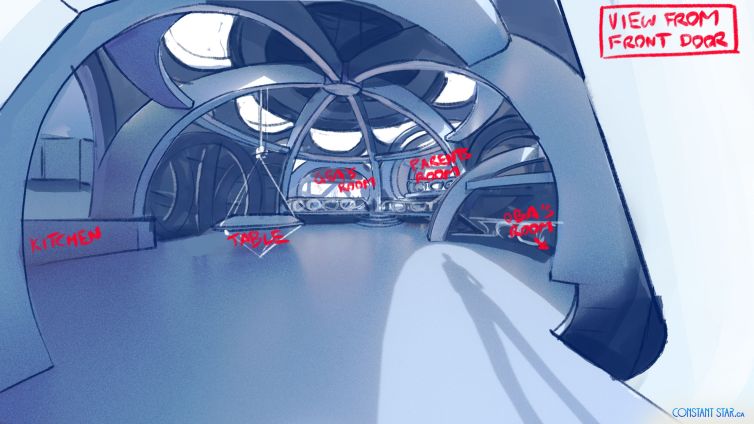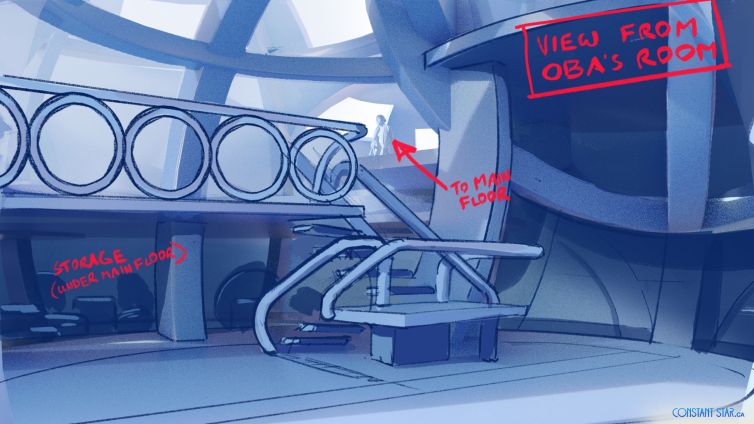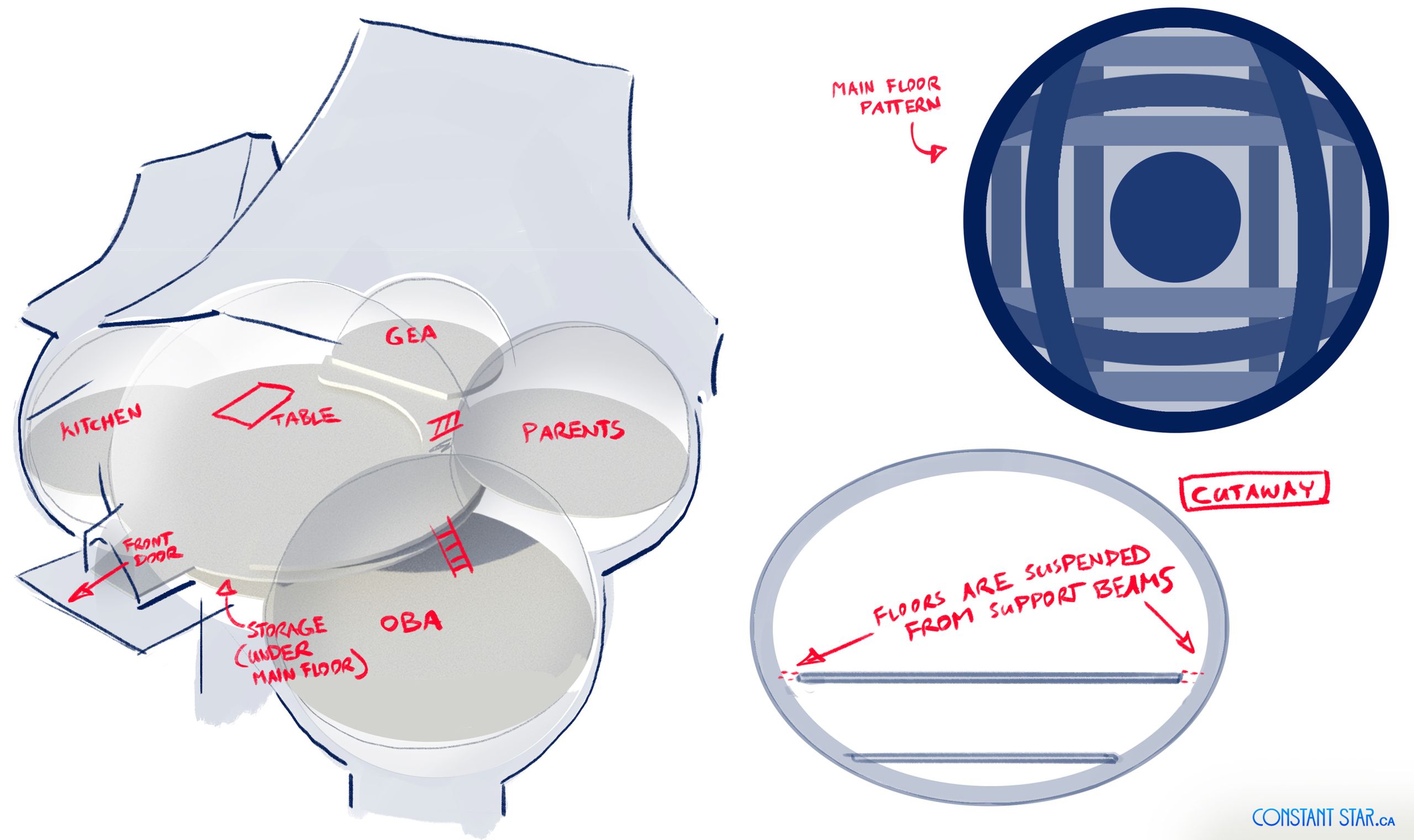- May 2, 2023
Lucas —
Jea’s house (spoiler alert?) isn’t a huge location in the grand scheme of the story, but for me it was crucial for cracking the personalities of Jea and her family, and the broader culture of her community. How do these people collect the materials they need to survive? What are they building their homes from? What do they eat? What do they wear? How do they make art? These opening pages are the key to all that.
I spent a ridiculous amount of time working out every nook and cranny of her home, and the more detail I got in to, the more I wanted to explore. The entire house was laid out as a 3d model, much more than ever appears in the comic, and the panels you see on the comic page were framed and ‘shot’ with virtual cameras.
Everything in Jea’s life is manufactured from found materials… but rather than disparate elements thrown together in a patchwork, salvaged items are deconstructed and woven together like some kind of gigantic wicker basket.
There is also a motif of suspension — the kitchen table is hung from the ceiling by tensioned wires, and even the main floor is braced between large outer beams. Much of the set dressing, too, is inspired by sailing ships and rigging.
Easter Egg: Jea’s house is decorated with super super early concept art from back when Steve first pitched the project to me five years ago (which just makes me feel old).
* * *
Steve —
Secret not secret; I’ve approached my storytelling career from the lens of screenwriting (and everything I know about storytelling I owe to M*A*S*H but that’s material for another page…) I’ve spent untold hours honing my ability to convey as much as I can on a page in as few & effective words as possible. I thought I’d become adept at maximising action and agency in a scene, pairing motivation with movement. I very much enjoy the screenplay format and I will continue to attempt to (and I quote U2’s frontman Bono with the following) “f*!K up the mainstream” of accepted screenwriting standards and tropes.
I’m no idiot (most of the time) and I didn’t think for a second that I could just slip on over to writing in comic or graphic novel format without facing a learning curve; yet it somehow never dawned on me that the very foundation of what I’d built my storytelling skills on was about to shift. I was still telling stories with pictures but lo-an- behold, these pictures didn’t move. Suddenly my entire paradigm was on tilt. “If the pictures can’t move, how do I tell a story using action?” (without it becoming LEGO instructions?)
Thankfully (as one might expect of someone in my line of “work”) I have access to a deep library of words with pictures. I can call on the amazing examples of linear storytelling using comic-art from a variety of sources, including a fav of mine, Jody Leheup & Nathan Fox’s ‘The Weatherman’, where early on you can watch a car brake, skid and slide off a future neo-tokyo-esq highway all in one third of a page. I dream of being that good at this one day.
Is this all a round-about way of talking about how we found some action for Jea to do that both grows her character, does some simple (yet important) world building – “Poof!” colour change poncho! – and also shows we know the basics of comic storytelling by ending our page on a question? Enticing you to “flip the page?” Yes.
If you’re lucky enough to be paired with an artist talented enough to pick up to reality what you’re putting down in words & thoughts, they might just make the writer look like he knows what he’s doing.
Also seriously, who doesn’t want to live in this glorious nest-home? It looks so cosy! Stay home Jea! Sleep this day away!







